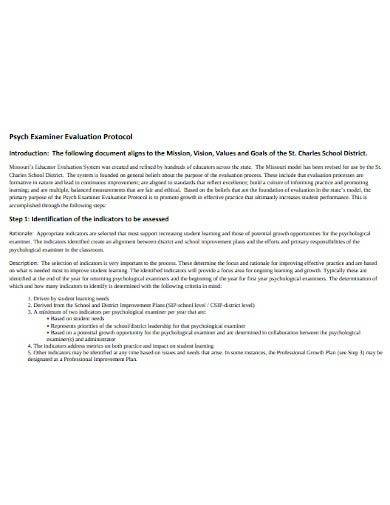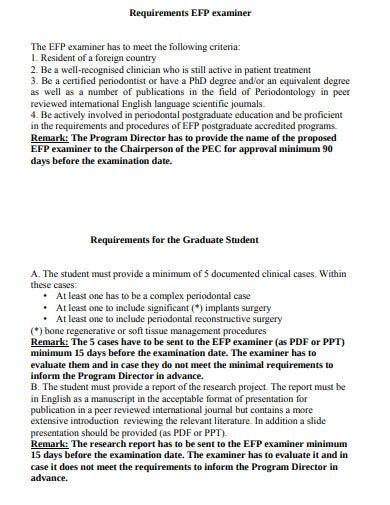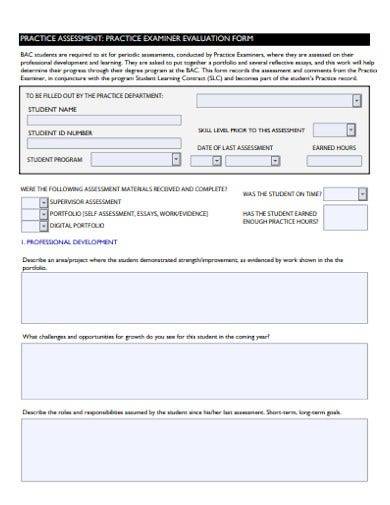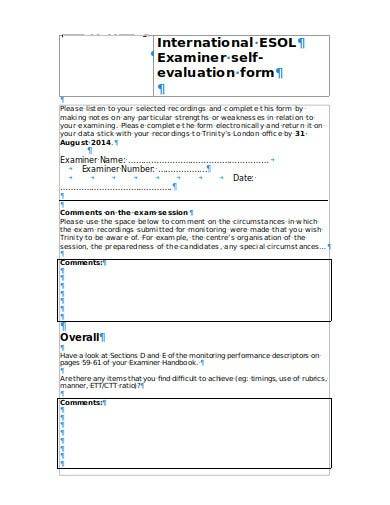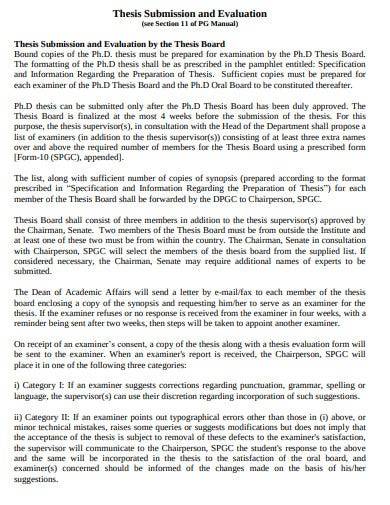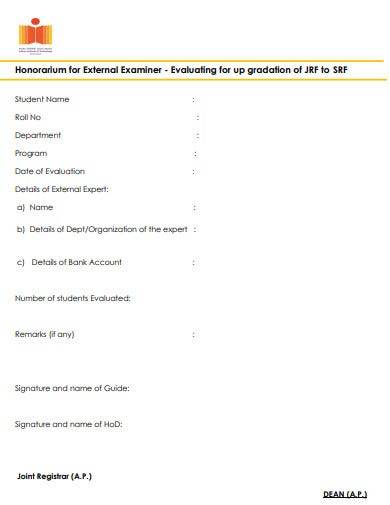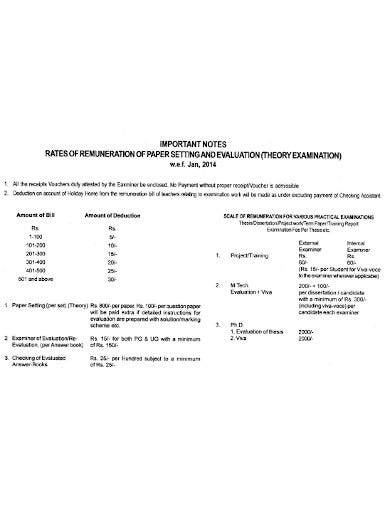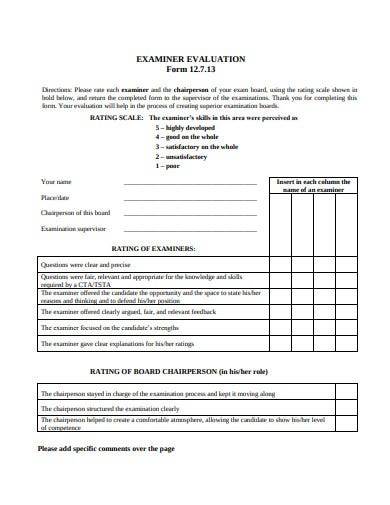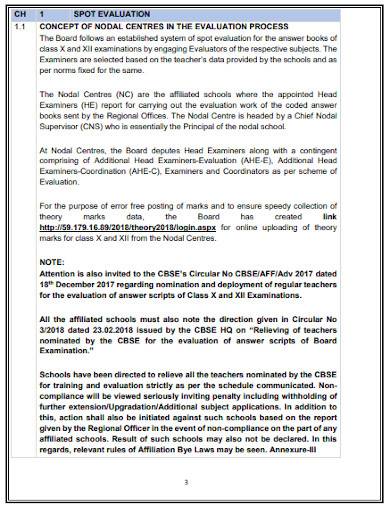Unlock the Power of Effective Sample Examiner Evaluation with Our Comprehensive Template. Whether you’re a seasoned professional or a newcomer in your field, our Sample Examiner Evaluation Template is your key to success. Designed to streamline your assessment process, this user-friendly tool empowers you to conduct thorough evaluations effortlessly. Discover the secrets to optimizing your samples, improving quality, and achieving excellence in your endeavors. Start your journey towards superior sample evaluation today!
FREE 10+ Examiner Evaluation Samples
1. Examiner Evaluation Template
2. Sample Examiner Evaluation Report
3. Sample Examiner Evaluation Form
What is an examiner evaluation?
An examiner evaluation, also known as an assessment or appraisal, is a systematic and structured process used in various contexts to assess the performance, competence, or quality of an individual, organization, product, or process. It plays a crucial role in ensuring objectivity, accountability, and improvement across a wide range of fields, from education to professional certification, product quality control, and even legal proceedings.
Educational Context:
In the realm of education, examiner evaluations are a common practice. Teachers and professors use them to assess students’ knowledge, skills, and abilities. This assessment can take various forms, such as written exams, practical tests, oral presentations, or projects. The goal is to gauge a student’s understanding of the subject matter and their ability to apply it. Standardized tests and assessments are often used to ensure fairness and consistency.
Professional Certification and Licensing:
Many professions require individuals to undergo examiner evaluations as part of the certification or licensing process. For example, doctors, lawyers, engineers, and pilots must pass rigorous examinations to prove their competence and eligibility to practice. These evaluations ensure that professionals meet a certain standard of knowledge and skill, which is essential for safeguarding public safety and trust.
Product Quality Control:
In manufacturing and quality control, examiner evaluations are essential to maintain product quality and safety. Inspectors and quality control professionals examine products against predefined criteria and standards to identify defects, deviations, or non-compliance. These evaluations help companies ensure that their products meet regulatory requirements and customer expectations.
Legal Proceedings:
In legal contexts, examiner evaluations can be used to assess the credibility of witnesses, evidence, or documents. Forensic experts may conduct evaluations to determine the authenticity of signatures, the validity of documents, or the cause of accidents or crimes. These evaluations play a critical role in the justice system, influencing the outcome of court cases.
Performance Appraisals:
In organizations, employee performance evaluations are a fundamental part of human resource management. Supervisors and managers assess employees’ job performance, skills, and contributions to the organization. These evaluations are often used to make decisions about promotions, raises, and professional development opportunities. They also serve as a basis for providing feedback and setting performance improvement goals.
Continuous Improvement:
Examiner evaluations are not limited to assessing individuals or products; they can also be applied to processes and systems. Organizations use evaluations to identify areas for improvement and implement changes to enhance efficiency, effectiveness, and quality. This approach, often associated with methodologies like Six Sigma or Total Quality Management, fosters a culture of continuous improvement.
In all these contexts, the key elements of an effective examiner evaluation include clear criteria or standards, impartiality, consistency, and transparency. These evaluations serve the purpose of providing feedback, making informed decisions, ensuring compliance, and ultimately driving improvement and excellence. Whether in education, professional fields, manufacturing, or legal matters, examiner evaluations contribute to accountability and the pursuit of higher standards.
4. Examiner Self Evaluation Form Template
5. Sample Thesis Submission and Evaluation
6. Sample Examiner Evaluation Format
7. Sample Theory Examiner Evaluation
8. Sample Examiner Evaluation Template
How to create an examiner evaluation?
Creating an effective examiner evaluation involves a systematic process to assess performance, competence, or quality in a structured and fair manner. Whether you are evaluating students, professionals, products, or processes, the following steps will help you design a robust examiner evaluation:
Define the Purpose and Scope:
Start by clearly defining the purpose of the evaluation and its scope. What specific aspects or criteria do you want to assess? What are the goals of the evaluation, and what outcomes are you looking to achieve? Understanding the purpose and scope is essential for designing a focused evaluation.
Establish Evaluation Criteria:
Identify the specific criteria or standards against which the evaluation will be conducted. These criteria should be relevant to the purpose of the evaluation and should reflect the desired outcomes. Criteria could include knowledge, skills, performance metrics, compliance with regulations, or adherence to best practices.
Design Assessment Methods:
Choose appropriate assessment methods based on the criteria and the context of the evaluation. Common assessment methods include written exams, practical tests, interviews, observations, surveys, and document reviews. The choice of methods should align with the objectives of the evaluation and ensure the collection of relevant data.
Develop Assessment Tools:
Create the assessment tools needed for data collection. These tools may include rubrics, checklists, scoring guides, questionnaires, or evaluation forms. Ensure that the tools are clear, concise, and capable of providing meaningful feedback.
Train Evaluators:
If multiple evaluators will be involved, provide training to ensure consistency and objectivity in the evaluation process. Training should cover the assessment criteria, procedures, and any specific guidelines or standards that evaluators need to follow.
Establish a Timetable:
Create a timeline for the evaluation process, including deadlines for assessments, data collection, and reporting. A well-defined timetable helps ensure that the evaluation progresses smoothly and stays on track.
Conduct the Evaluation:
Administer the evaluation using the chosen methods and tools. Ensure that evaluators follow the established procedures and guidelines consistently. Collect data systematically and maintain records of the evaluation process.
Analyze Data:
Once the evaluation is complete, analyze the collected data. Use statistical analysis, if applicable, to identify trends, patterns, and areas of improvement. Data analysis will provide valuable insights into the performance or quality being assessed.
Generate Feedback and Reports:
Prepare feedback and evaluation reports based on the analysis of data. These reports should include clear, actionable recommendations and highlight strengths and weaknesses. Feedback should be constructive and focused on improvement.
Review and Refine the Evaluation Process:
After each evaluation cycle, conduct a review to assess the effectiveness of the evaluation process itself. Are the criteria still relevant? Were the assessment methods appropriate? Were there any issues with consistency or fairness? Use feedback from stakeholders to make necessary improvements.
Communicate Results:
Share the evaluation results with relevant stakeholders, whether they are students, professionals, employees, or others. Communication should be transparent, and feedback should be provided in a timely manner.
Implement Improvement Plans:
Encourage those being evaluated to use the feedback to develop improvement plans and take corrective actions as needed. An effective evaluation should lead to continuous improvement.
Creating an examiner evaluation requires careful planning, attention to detail, and a commitment to fairness and objectivity. When done correctly, it serves as a valuable tool for assessing performance, competence, or quality and driving positive change.
9. Examiner Evaluation Sample
10. Psych Examiner Evaluation Model
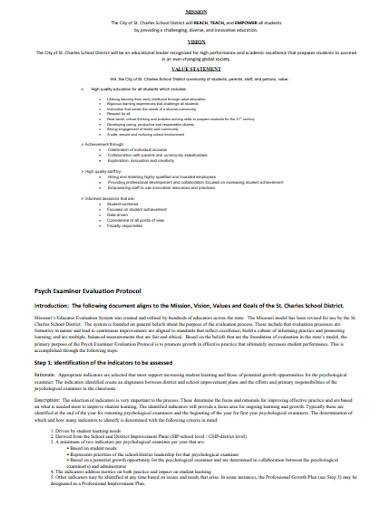
11. Examiner Spot Evaluation Guidelines
What should be included in an Examiner evaluation?
An effective examiner evaluation should include a well-structured set of components and criteria that are tailored to the specific context and purpose of the evaluation. Whether you are evaluating students, professionals, products, or processes, here are the key elements that should be included:
Clear Objectives and Purpose:
Begin by clearly stating the objectives and purpose of the evaluation. What do you aim to assess or measure? What outcomes are you looking to achieve through the evaluation process? Defining these objectives provides clarity and direction.
Criteria and Standards:
Define the criteria or standards against which the evaluation will be conducted. These criteria should be relevant to the purpose of the evaluation and should be specific, measurable, and aligned with the desired outcomes. Criteria could include knowledge, skills, performance metrics, compliance with regulations, or adherence to best practices.
Assessment Methods:
Specify the assessment methods that will be used to collect data and evaluate performance. Common assessment methods include written exams, practical tests, interviews, observations, surveys, and document reviews. The choice of methods should align with the objectives and criteria of the evaluation.
Assessment Tools:
Develop the assessment tools needed for data collection. These tools may include rubrics, checklists, scoring guides, questionnaires, or evaluation forms. Ensure that these tools are clear, concise, and capable of providing meaningful feedback.
Evaluators and Training:
Identify who will be responsible for conducting the evaluation and ensure that they receive appropriate training. Training should cover the assessment criteria, procedures, and any specific guidelines or standards that evaluators need to follow. Training helps ensure consistency and objectivity in the evaluation process.
Timetable and Deadlines:
Create a detailed timetable for the evaluation process, including deadlines for assessments, data collection, analysis, and reporting. A well-defined timetable helps ensure that the evaluation progresses smoothly and stays on track.
Data Collection Procedures:
Define the procedures for data collection, including the logistics, timing, and methods to be used. Ensure that data is collected systematically and in a standardized manner to maintain consistency and fairness.
Analysis of Data:
Specify how the collected data will be analyzed. Use appropriate statistical methods, if applicable, to identify trends, patterns, and areas of improvement. Data analysis is crucial for drawing meaningful conclusions from the evaluation.
Feedback and Reporting:
Determine how feedback and evaluation reports will be generated and communicated. Reports should include clear, actionable recommendations and highlight strengths and weaknesses. Feedback should be constructive and focused on improvement.
Review and Refinement:
After each evaluation cycle, conduct a review to assess the effectiveness of the evaluation process itself. Seek feedback from stakeholders and make necessary refinements to improve the evaluation process.
Communication of Results:
Clearly communicate the evaluation results to relevant stakeholders, whether they are students, professionals, employees, or others. Transparent communication fosters trust and understanding.
Continuous Improvement:
Encourage those being evaluated to use the feedback to develop improvement plans and take corrective actions as needed. An effective evaluation should lead to continuous improvement.
Documentation and Records:
Maintain comprehensive records of the evaluation process, including assessment results, feedback, and any relevant documentation. Proper documentation ensures accountability and transparency.
Tailoring these elements to the specific context and purpose of the examiner evaluation is essential for its effectiveness. The inclusion of these components helps ensure that the evaluation process is structured, fair, and capable of providing valuable insights for decision-making and improvement.
Related Posts
FREE 10+ Plagiarism/Cheating Policy Samples in MS Word | PDF
FREE 10+ Professional Boundaries Policy Samples in PDF
FREE 10+ Charter Document Samples in MS Word | PDF
FREE 10+ Related Personnel Policy Samples in MS Word | PDF
FREE 10+ Tuition Payment Policy Samples in PDF | MS Word
FREE 10+ Suspension And Expulsion Policy Samples in MS Word | PDF
FREE 10+ Class Syllabus Samples & Templates in MS Word | PDF
FREE 10+ Student Travel Policy Samples in MS Word | Google Docs | Pages | MS Outlook | PDF
FREE 10+ Alternative Dispute Resolution Samples in MS Word | PDF
FREE 10+ Program Description Samples in PDF | MS Word
FREE 10+ High School Scholarship Program Samples in PDF
FREE 10+ Uniform Complaint Policy and Procedure Samples in PDF
FREE 10+ Bullying Policy Samples in MS Word | PDF
FREE 10+ Fiscal Control Policy Samples & Templates in MS Word | PDF
FREE 10+ Cooperative Policy Samples & Templates in MS Word | PDF

